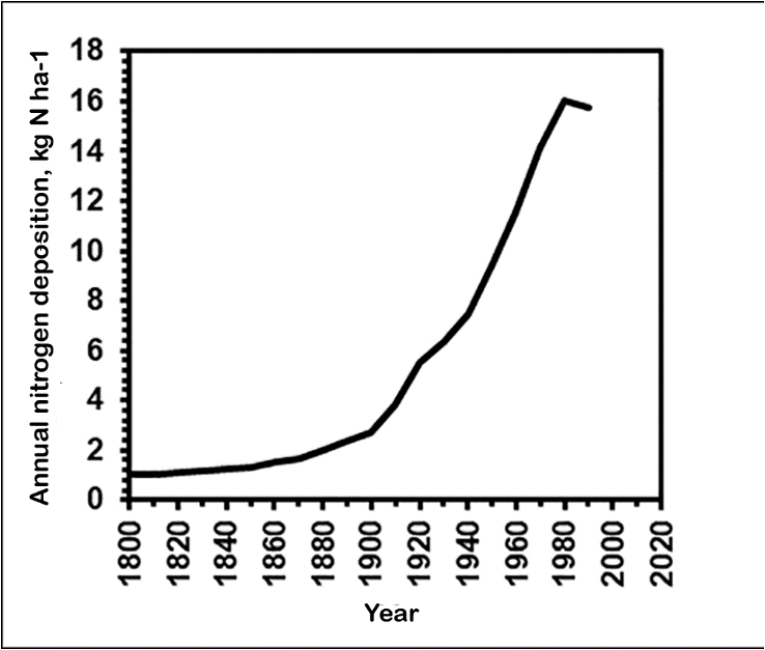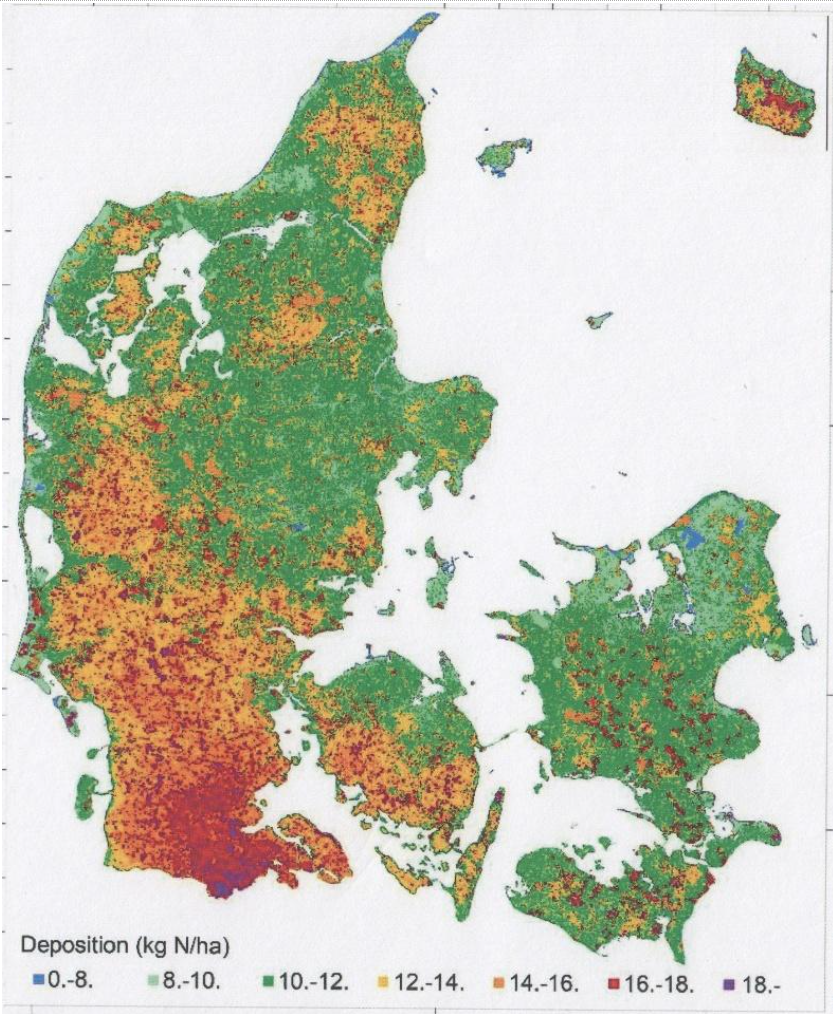Ecology and N-pollution
The filamentous structure with intercalary growth may be advantageous, as it allows for continuous and unrestricted expansion of the felted mat. The dense mat of filaments enables the species to spread across surfaces and overgrow crustose competitors.
Gylletråd grows on light-exposed surfaces of twigs. It can instantly absorb moisture from dew or precipitation via its sponge-like mat and has a very large surface area exposed to airborne ammonia. Interestingly, these exposed habitats also demand special UV protection.
Further field studies are needed to investigate its basic physiology, growth rates, and response to environmental conditions.
Gylletråd remained relatively unnoticed until it became dominant—likely in response to decreasing acidification from precipitation in the 1970s and the subsequent rise in atmospheric ammonia deposition due to intensified industrial agriculture. Similar observations were made in Germany (Frahm 1999), but with the genuine Klebsormidium crenulatum.
Estimates indicate a steady increase in nitrogen deposition from approximately 1 kg N ha⁻¹ in 1800 to about 16 kg N ha⁻¹ in 1990. Over the following 30 years, nitrogen deposition decreased to around 12 kg N ha⁻¹ by 2023 (Ellermann et al., 2024).

